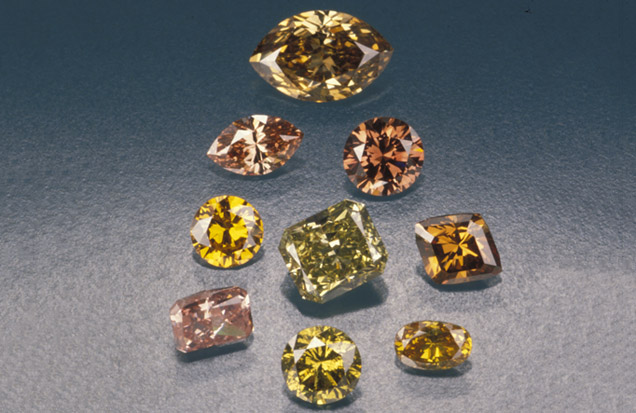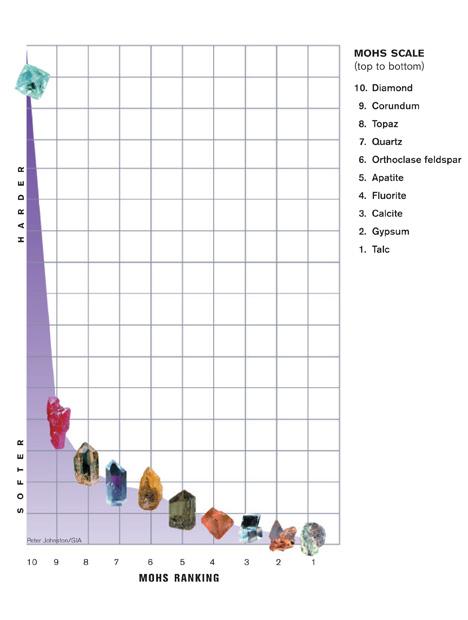Fancy Color Diamond Care and Cleaning Guide

Gem and mineral hardness is measured on the Mohs scale. The scale originated in 1822 when Friedrich Mohs chose ten minerals and assigned numbers to them, based on the relative ease or difficulty with which one could be scratched by another. But the Mohs scale is deceptive. The steps between the minerals are not evenly spaced. For example, diamond is only one number away, but it’s many times harder than gems in the corundum family. Only a diamond can scratch a diamond.
Something the Mohs scale doesn’t show, but that’s equally important to the diamond industry, is that diamond can also scratch any of the precious metals used for settings. That means a diamond that’s loose in its setting can wear through a prong over time.

Diamond rates highest on the Mohs hardness scale, at number 10.
Toughness
Any stone, including a diamond, will fracture if it’s hit hard enough in the right place. Toughness is a measure of how well a gem can survive an impact and resist breaking, chipping, or cracking.
Diamonds are tougher in the directions where the atoms are bonded tightly together, less tough where they’re not so tightly bonded.
The weakest directions are the ones where the atoms are farthest apart. It’s easier to break a diamond in those directions, which are called cleavage directions. A cutter can split a rough diamond by hitting it sharply in the cleavage direction. Even after cutting, a hard blow can still cleave or fracture a diamond. This can happen during the setting process, when it’s being worn, or when it accidentally strikes another object.
Stability
Stability is a term that describes how well a diamond resists temperature changes and chemicals. Diamonds are very stable. They’re invulnerable to virtually all acids, for one thing. The cutting process generates a lot of heat, but diamonds usually endure intact. Situations that are more threatening to a diamond’s stability are those that involve sudden and extreme temperature changes. Those changes can cause thermal shock and create new fractures and cleavages or cause existing ones to spread.
Diamonds will burn at about 1562°F (850°C). House fires and jewelers’ torches can reach that temperature. During jewelry repair, the bench jeweler can use certain methods to protect the diamond from the torch’s high-temperature flame.
Cleaning
Diamonds can be safely cleaned with lint-free cloths, commercial jewelry cleaning solutions, and household detergents.
Harsher cleaning methods are not recommended for household use. These include powdered abrasive household cleansers, ultrasonic cleaners, and steam cleaners.



